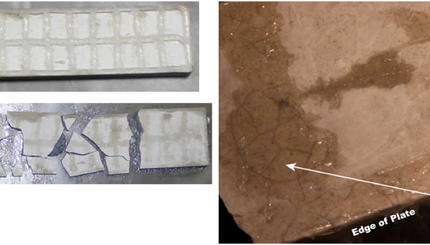
The thesis research of John Valenza has revealed the mechanism responsible for salt scaling of concrete. Ice has a thermal expansion coefficient 5 times as large as that of concrete. As the temperature falls below the freezing point, the ice bound to the concrete develops tensile stress. Pure ice is too strong to crack, but when a little salt is dissolved in the water, the ice contains unfrozen pockets of brine that concentrate the stress. When the ice cracks, the crack runs into the surface of the concrete and removes a flake of cement. The details are described in a feature article that has just appeared in the Journal of the American Ceramic Society.
Related publications:
Thesis:
“Mechanisms of Frost Damage”, G.W. Scherer and J.J. Valenza II, pp. 209-246 in Materials Science of Concrete, Vol. VII, eds. J. Skalny and F. Young (American Ceramic Society, 2005)
“Mechanisms of Salt Scaling”, J.J. Valenza II and G.W. Scherer, Materials and Structures 38 (May 2005) 479-488
“Mechanism of Salt Scaling”, J. J. Valenza II and G.W. Scherer, J. Am. Ceram. Soc. 89 [4] 1161–1179 (2006)